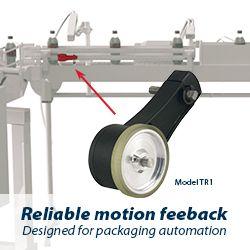NASA'S Refueling Demonstration Proves Viability Of Satellite-Servicing Technologies
The cutting-edge technologies that RRM is demonstrating could extend the lives of many of the hundreds of satellites currently in geosynchronous Earth orbit.
WASHINGTON -- NASA has demonstrated robotic fluid transfer in space, an objective that will help inform the development of robotic technology to refuel satellites. The first-of-its-kind demonstration was performed during the Robotic Refueling Mission (RRM) aboard the International Space Station.
"This achievement is a major step forward in servicing satellites," said Frank Cepollina, associate director of the Satellite Servicing Capabilities Office at NASA's Goddard Space Flight Center in Greenbelt, Md. "RRM gives NASA and the emerging commercial satellite servicing industry the confidence to robotically refuel, repair and maintain satellites in both near and distant orbits -- well beyond the reach of where humans can go today."
A joint effort with the Canadian Space Agency, RRM uses the International Space Station as test bed for the research and development of robotic satellite-servicing capabilities. During six days of activity last month, controllers on the ground at NASA's Johnson Space Center in Houston used the space station's remotely operated Dextre, a robotic space handyman, to cut wires, remove and stow caps and perform tasks necessary to refuel satellites not designed to be refueled.
The cutting-edge technologies that RRM is demonstrating could extend the lives of many of the hundreds of satellites currently in geosynchronous Earth orbit. These are satellites that deliver essential services such as weather reports, cell phone communications, television broadcasts, government communications and air traffic management.
RRM tasks scheduled to be performed later this year include thermal blanket cutting and fastener and electronic termination cap removals. NASA anticipates RRM technologies may help boost the commercial satellite-servicing industry in the future. Such servicing capabilities could greatly expand options for government and commercial fleet operators.
For information, updates and videos about RRM and NASA's satellite servicing activities, visit:
http://ssco.gsfc.nasa.gov
For more information about the International Space Station and its crew, visit:
http://www.nasa.gov/station
Featured Product

Model TR1 Tru-Trac
The Model TR1 Tru-Trac® linear measurement solution is a versatile option for tracking velocity, position, or distance over a wide variety of surfaces. An integrated encoder, measuring wheel, and spring-loaded torsion arm in one, compact unit, the Model TR1 is easy to install. The spring-loaded torsion arm offers adjustable torsion load, allowing the Model TR1 to be mounted in almost any orientation - even upside-down. The threaded shaft on the pivot axis is field reversible, providing mounting access from either side. With operating speeds up to 3000 feet per minute, a wide variety of configuration options - including multiple wheel material options - and a housing made from a durable, conductive composite material that minimizes static buildup, the Model TR1 Tru-Trac® is the ideal solution for countless applications.
